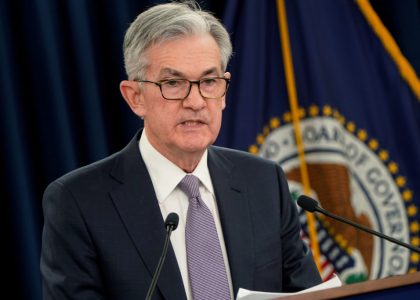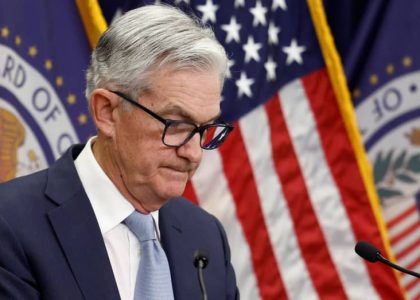We've been tracking the interest rate complex even more closely since October when we saw the commercial traders beginning to place their bets ahead the Federal Reserve Board's (FRB) December meeting and while we'd like to take credit for the predominantly correct calls in the interest rate sector through 2015, we really have to chalk it up to knowing who to follow. The commercial traders have done a great job of anticipating both the FRB's actions and the market's reactions. Join us as we determine how their recent actions have affected the bond markets and what the spread movement in this market sector could mean to the broader economy going forward.
The US and the FRB currently find themselves ahead of the global economy. We were the most proactive during the economic collapse of '09 therefore, it follows that we've led the way out. The problem is that just as the FRB attempts to raise rates, global growth in China, Japan and Germany, the next three largest global economies, is floundering on the global stage for everyone to see. China's issues are basic transparency and investor faith in the numbers they report as their economy attempts to shift some of the economic load from exporting to domestic demand and tertiary development. Meanwhile, Japanese Prime Minister Shinzo Abe's attempt to re-inflate the Japanese economy is turning into a monumental failure as it kicks off a currency war, the likes of which we haven't seen since the Asian Contagion of 20 years ago. Finally, Germany's headline looks great. "Jobless Claims at All-Time Low." However, their money markets just traded below the ECB deposit rate of .05% and into NEGATIVE territory to match Japan's move. The primary goal of each of these moves is to push funds into the public domain and spur economic activity. The fact no one wants to face is that the major economies are over extended and must re-trench.
Here's the real issue; re-trenching economies cost politicians their jobs. This is what drives the, "buy now, pay later" schemes that governments are running on their own people and each other. This is exactly what happened 10 years ago with the housing bubble. The government's quest to spur economic activity through artificially low interest rates in a post 9/11 environment forced money to be allocated as carry trades rather than to properly risk adjusted business plans. When our economy collapsed, our government issued stimulus checks. While other countries adopted different methods of repatriating funds to their constituents, I mean voters, er...citizens with the idea of paying down private debt levels and instilling confidence in the global economic system. However, many citizens took this opportunity to leverage their unexpected betrothal and used it as down payments thus, further leveraging their nations' futures. While there are certainly differences in the makeup of the shareholders of these countries' debts, the point here is the net increase in the total debt both governmentally and as individual citizens. When poor consumer choices are conjoined with governmentally manipulated investment vehicles no one wins but, everyone has more...for now. Our citizens fell for this the first time around. China's are screaming for alternative investment vehicles as their stock market has now fallen more than 20% already this year. Furthermore, the transfer of debt from the government and onto its private citizens has been the primary focus of Japan's monetary policy as its citizens have been far more frugal than its government.
 We've bordered this picture with some pretty broad brush strokes but, for the sake of brevity, must move on. The general points remain that the major economies have been pumped full of every accelerant their respective leaders can throw at them and while it has done wonders for the global equity markets over the last seven years, no one knows how this pace can be maintained. The simple answer is that it can't and this is what the move in the domestic bond spreads are showing us. We've noted several times that 2015 was a range trading year in the US interest rate markets and you can see the success commercial traders have had in calling tops and bottoms in these markets through our research here. The point here is that the consolidation began to grow tighter and tighter as we approached December's FRB meeting and the recent breakout in the spread from this consolidation bodes poorly for our economy and global equity markets as a whole.
We've bordered this picture with some pretty broad brush strokes but, for the sake of brevity, must move on. The general points remain that the major economies have been pumped full of every accelerant their respective leaders can throw at them and while it has done wonders for the global equity markets over the last seven years, no one knows how this pace can be maintained. The simple answer is that it can't and this is what the move in the domestic bond spreads are showing us. We've noted several times that 2015 was a range trading year in the US interest rate markets and you can see the success commercial traders have had in calling tops and bottoms in these markets through our research here. The point here is that the consolidation began to grow tighter and tighter as we approached December's FRB meeting and the recent breakout in the spread from this consolidation bodes poorly for our economy and global equity markets as a whole.
The spread below subtracts the 10-Year Treasury Note futures price from the 30-Year Treasury Bond futures price. We used to call this the, "Nob" spread when traded on the floor of the exchanges instead of through their servers. This spread has two meanings and both are critical. When this spread is rising (widening), as it has been for the last few weeks, it indicates a flattening yield curve. The spread between the short-term interest rates and the long-term interest rates is narrowing. This is an indication of declining economic activity at this point in the economic cycle. It means there is less fear of long-term inflation and suggests that the FRB may need to ADD liquidity. Therefore, the recent rally in this spread goes against EVERYTHING the FRB was attempting to accomplish with its first rate hike in years. Conversely, when this spread is falling (contracting), as we expected it to prior to Japan's surprise, it means that economic expectations are picking up. The yield curve would steepen and suggest that longer time horizons will be more affected by inflation than we're experiencing in our current environment. Let's move to the chart we published three weeks ago.

This spread, as you'll see on the next chart, is now trading four full handles higher. That's a $4,000 per contract move in the 10-30 bond spread in just a couple of weeks and shows just how volatile this spread can be. As a point of reference, this spread closed at 28.61 on December 15th, the day the FRB raised rates in anticipation of steepening the yield curve.

The interest rate markets are approaching a crisis of confidence that is the reality of financing tomorrow for today. The unintended consequence of global policies has been the over inflation of the equity markets and carry trade spreads. The reality that is slowly sinking into the consciousness of the markets' collective participants is that this is unsustainable. The world simply cannot exist in a state of ever growing demand and governments (politicians) can't base their solutions to these problems on an election cycle timeline.
Unfortunately, there are times when economic contraction and consumer retrenchment is necessary. However, and herein lies the punch line, the global economy will receive every possible organizational assistance to continue its expansion...until it doesn't. Therefore, the trade is to take advantage of this spike of rational market behavior by selling the 30-year Treasury Bonds and buying the 10-year Treasury Note as we expect the spread to contract once again as the can gets kicked down the road.





